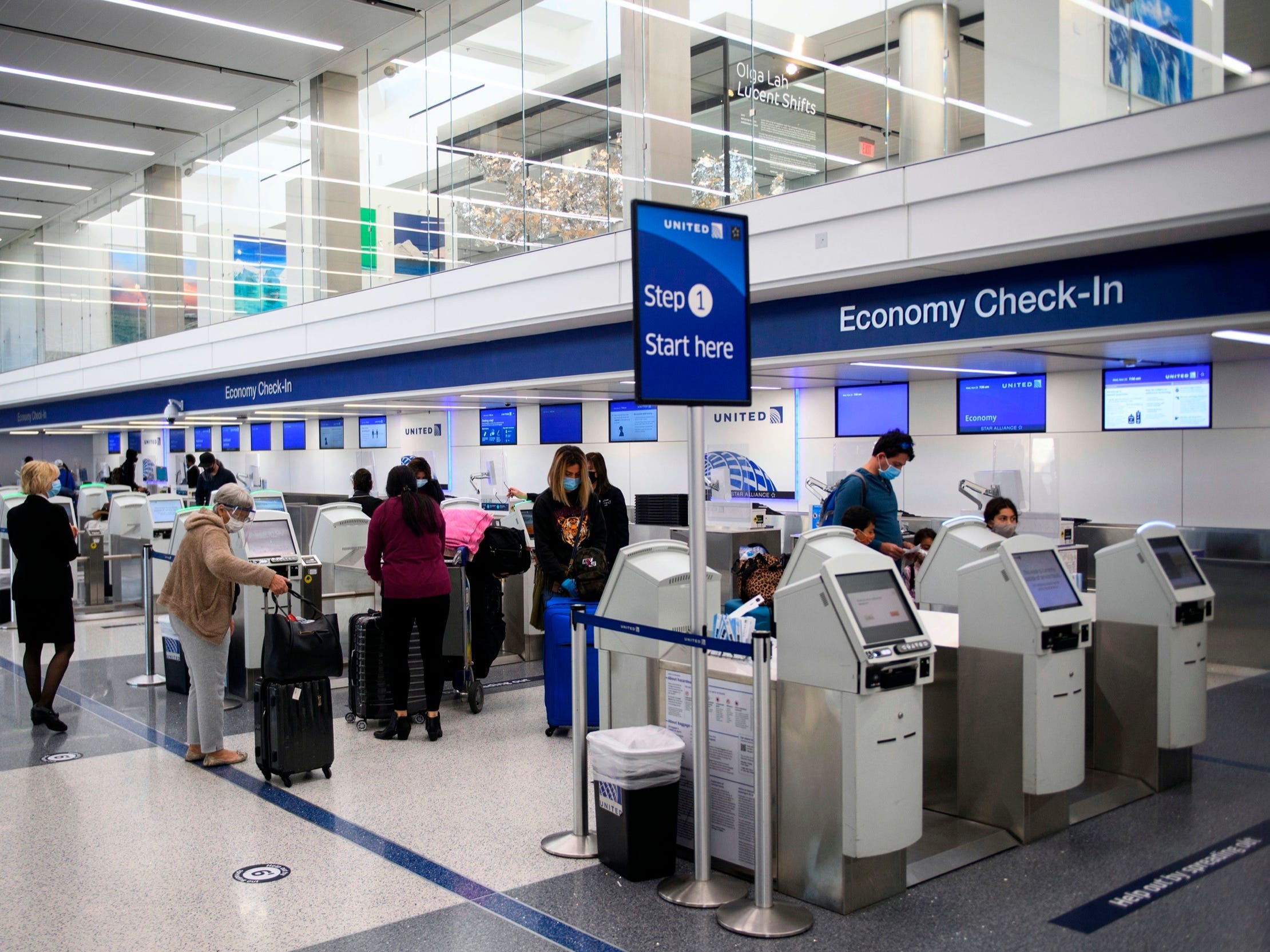
PATRICK T. FALLON/AFP/Getty
- United Airlines is being more proactive when winter weather and other travel hazards arise.
- A February storm in Denver threatened flight cancellations but United was able to proactively rebook as many as 15,000 flyers.
- The program is the latest in a new passenger-focused trend that aims to reduce trip interruptions.
- See more stories on Insider's business page.
Bad weather is an inevitability that can ruin vacations, delay flights, and cause stress for travelers.
But when a snowstorm threatened to cripple operations at Denver International Airport over a weekend in February, United Airlines decided to try a different approach.
As early as a week before departure, the airline began reaching out to customers to inform them of the storm and offer rebooking options so they wouldn't be stranded with a canceled flight when they showed up at the airport. For some travelers, it was the first they were hearing about the storm and were glad to change their flights to avoid it.
35,000 passengers were scheduled to fly during the storm, and the new proactive strategy saved 15,000 flyers from having their trips ruined, United said. Once those flyers were accommodated, the company was able to deal with the rest by consolidating flights, rebooking passengers away from Denver, and adding more flights in the days leading up to the storm.
"We actually added 3,000 seats of capacity, 22 extra flights that we had built, on the Friday before, and we were able to seamlessly move customers over," David Kensick, managing director of United's global operations center, told Insider.
Airport operations were one factor United looked at when determining how to approach the Denver storm, Kensick said, but other external factors - such as if public transportation would still be running to the airport - were also considered.
It's a practice passengers hope they will never need, and United says feedback in post-trip surveys so far has been encouraging.
Focusing on passengers and not just traditional metrics
United has been implementing passenger-focused programs designed to minimize trip interruptions for years.
A similar program called "ConnectionSaver" launched in 2019 makes some flights will quite literally wait for connecting passengers that are arriving on delayed flights. Passengers that do experience a delayed flight will often be given detailed reasoning on why their flight was delayed in a new flight status feature.
United is also giving passengers in hub cities the heads up when external issues might impact travel. For example, when the Blue Line train that connects O'Hare International Airport with downtown Chicago briefly stopped running to the airport, United messaged travelers and warned them that they might need a little bit more time to get to the airport if arriving via the train.
These programs are largely non-existent at other airlines. Kensick attributes them to a new customer-first attitude under chief executive Scott Kirby, who took over Oscar Munoz in May 2020. United found that the performance metrics by which airlines live - on-time performance, most importantly - might not be the best indicators of a great airline from the passenger perspective.
"If you slam the door, leave on time and you leave 20 people behind, for them, they don't feel like they left on time," Kensick said.
It's not always as simple as just holding the aircraft door, though, as a flight that's delayed for even five minutes could run into issues that would've been avoided had it left on time. That's why United has to be strategic about how long flights can be held for and how many passengers it can accommodate with the program.
United has also developed a way of finding potential chokepoints in its schedule by narrowing down which flight will have the most ripple effects on operations should it be delayed or canceled. Known as "dynamic priority flights," additional resources may be deployed to ensure that everything goes smoothly or the consequences could spiral.
The Denver debut of these new programs comes as the airline works to recover from the pandemic. Passenger levels are still a fraction of what they were in 2019, and spare aircraft are a plentiful and can be moved around as needed.
United says that the solution will be to "right size" the airline as it returns to full strength. For example, an undersold flight on a large aircraft could see a smaller aircraft swapped in, freeing up the larger aircraft should the airline need it.
"During the pandemic, we've had so much disruption and it's given us a chance to almost pause and rethink how we're going to run our airline," Kensick said.
The challenge for United will be to maintain its proactivity during adverse weather events once passenger levels are back to normal. Nearly 70,000 passengers were scheduled to fly United during the snowy February weekend but that number might be double by next winter. Kensick just wants passengers to know that "United's got your back."
"We want to get you to your destination with your bag on time, and we're doing all this work behind the scenes to coordinate that," Kensick said.
